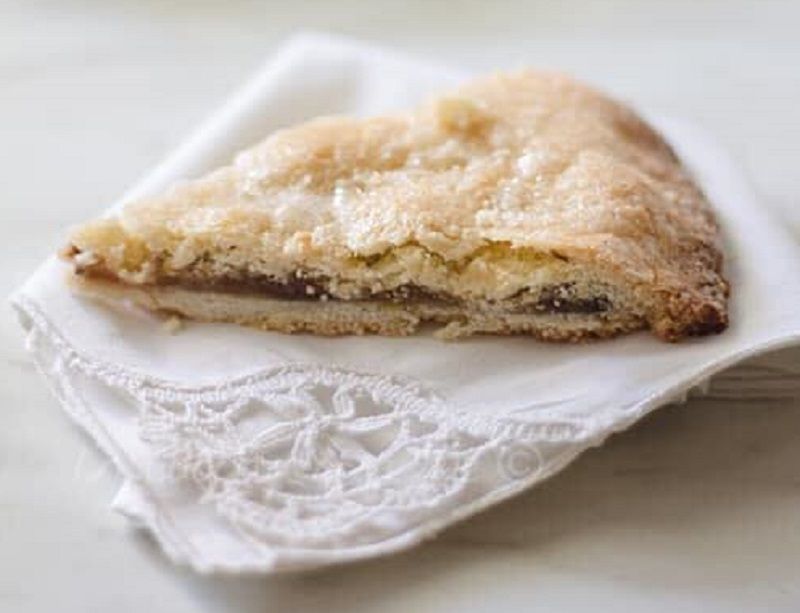The story of “Spungata,” the dessert from Sarzana

The beautiful story of Sarzana’s typical dessert, steeped in great tradition and perfect for Christmas. There are things that welcome you when you arrive in a place or sound like a warm “goodbye” when you leave. Even Liguria, despite its gruff reputation, has several of these. One, undoubtedly, is the Spungata of Sarzana. After all, everyone has passed through Sarzana in history: leaders, poets, popes, generals, pilgrims, and soldiers. A city like this could not fail to produce a sweet that encompasses all of this: a thin layer of Roman culture with all the flavors of the Mediterranean, from Jewish pastries to the candied fruits of the Moors, from the sobriety of Genoese sweets to a sprinkle of Medici and even Habsburg taste. Because what the A12 does today, perhaps the Via Francigena did even better in the past. And maybe there’s a Galactic Guide somewhere recommending pilgrims to stop in Sarzana to eat the Spungata. Recently, Forbes, a globally known magazine for economics and lifestyle, also talked about it in this article. To truly understand what Spungata is, we went to Gemmi in Sarzana, a historic pastry shop on the central Via Mazzini, right where Via Aurelia and Via Francigena intersect. We interviewed Fiammetta Gemmi, daughter of the historic pastry chef Silvano Gemmi, who was an absolute reference for Spungata for over sixty years. Spungata of Sarzana – says Fiammetta, showing one in the lively coming and going of her pastry shop, a true museum of Spungata – is a very ancient dessert, one of the oldest in Italy, definitely medieval but with roots in Latin culture and the late empire. Its name derives from Latin “spongia,” the sponge, perhaps indicating its soft content. It is typical of Sarzana and other locations, all situated around the Via Francigena. The one we produce here follows the recipe transcribed by the Robbi family, of Swiss origin, who opened this pastry shop before the Unification of Italy. Spungata is made like a large dumpling of fine puff pastry containing a compote of apples and pears, preferably local apples, the Rodelle, hand-mixed with other ingredients such as toasted almonds and Pisa pine nuts, candied orange peel, grated wild orange peel that gives a slightly bitter touch, and cinnamon, which not only imparts a good fragrance but also helps preserve the product longer. The preparation is simple, but a skilled pastry chef is also a good magician: we follow Gemmi’s pastry chef, confident that somewhere, without us noticing, he has hidden his secret to maximize the taste of his Spungata. Once the filling is prepared, it is carefully distributed on an ancient beechwood mold and covered with pastry, which is then trimmed with an ancient compass. After baking, it is dusted with powdered sugar. Spungata should be served warm to release all its mix of flavours and aromas. It doesn’t suffer anything except the cold, which stifles its taste. It lasts a long time; even after a month, it’s still delicious: just put it in the oven and heat it slightly so that the aromas return perfectly, and the pastry remains fragrant to taste. “Once upon a time, Spungata in Sarzana was mainly prepared for Christmas. My father Silvano was the first to decide to make Spungata all year round, following the model of Sienese Panforte. His idea was rewarded when Sarzana began to be visited and appreciated as a tourist destination, many people discovered it worldwide. Today many tourists come to Sarzana, taste Spungata, fall in love with it, and then want to gift or consume it once they return home.”We ship Spungata anywhere, just contact us on our website! https://www.pasticceriagemmi.it/ or, send us a message on facebook.”
If you’re travelling on the A12 heading south towards Tuscany or, better yet, if you travel north and are entering Liguria, stop by Sarzana; you won’t regret it. Sarzana, with its castles, historic centre, and history, is a fantastic hybrid that seems to have sprung from the genius of some writer: no longer Tuscany but not yet Liguria. It is turreted and elegant like Tuscan cities but is closer to Genoa and the Riviere. Its typical sweet, the Spungata, is also a strange hybrid: no longer a Sienese panforte model, but not a frugal Genoese sweetbread either. It’s a recipe of the plains, made of contacts and trade, but it also contains products from the deep hinterland.What is Spungata?
How is it made and what does Spungata contain?
There can’t just be one Spungata, so how many varieties are there?
Since this recipe is so ancient, let’s list some VIPs from history who, passing through Sarzana, might have tasted Spungata…
How should Spungata be served?
It pairs perfectly with a sweet wine, a dessert wine, or better yet, a Sciacchetrà. That’s it, Sarzana’s Christmas is Spungata and Sciacchetrà. What about outside of Sarzana for those who want it at home?



